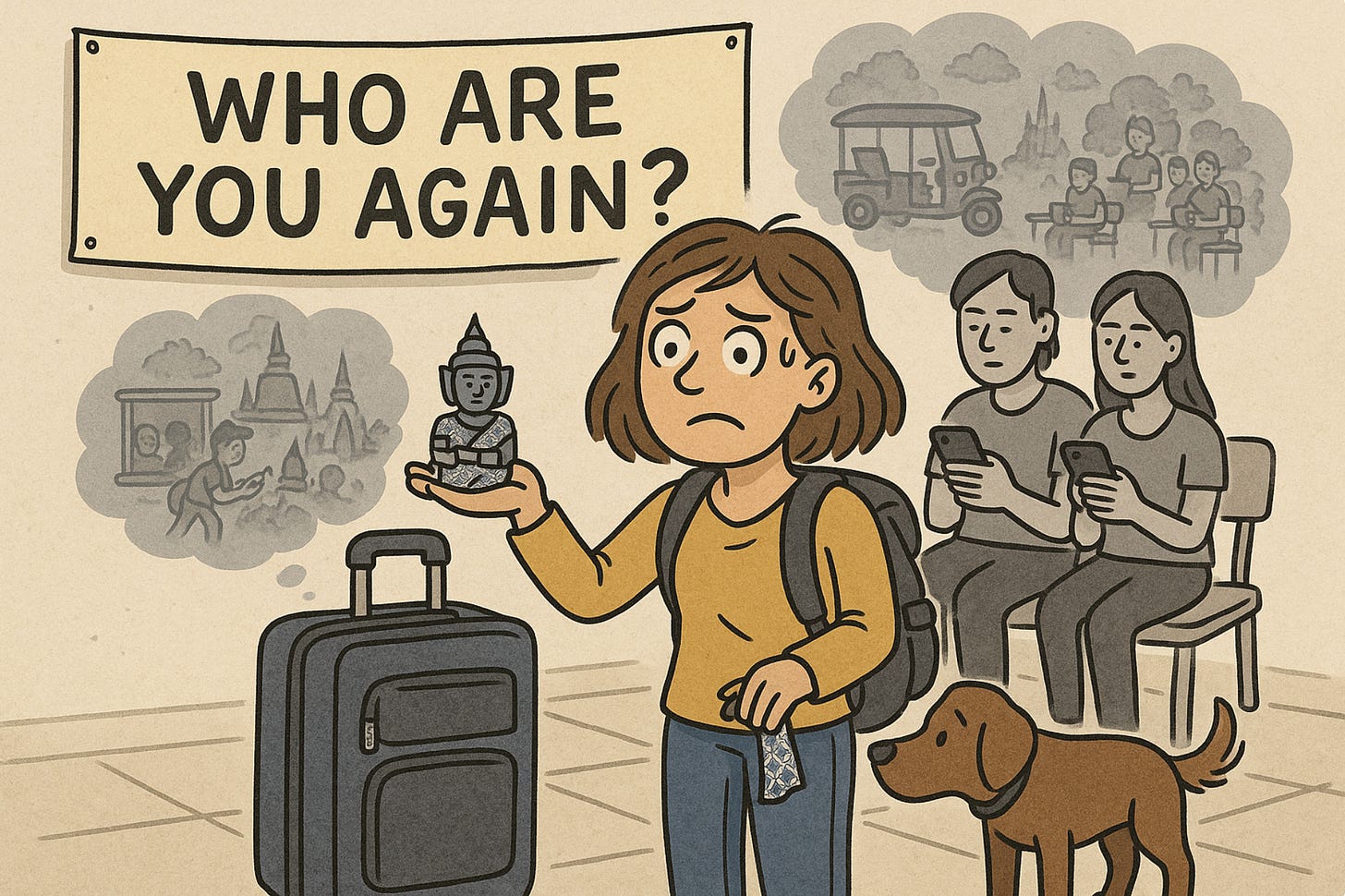How to Survive Reverse Culture Shock
After teaching abroad, how to adapt when you return home.
Coming home can be harder than leaving.
You expect to feel comfortable, relaxed, even excited. But instead, you feel disconnected, flat, maybe even lost. That’s reverse culture shock. And if you’ve been teaching abroad, it’s more common than you think.
This article will help you understand what reverse culture shock is, why it happens, and how to get through it with your sanity (and sense of humour) intact.
What is reverse culture shock?
You don’t feel like you belong - in the place you’re supposed to belong.
Reverse culture shock is the emotional and psychological disorientation that happens when you return to your home country after living abroad. You expect to slot back in seamlessly. Instead, you feel out of place.
Everyday things seem oddly unfamiliar or annoying. Friends and family don’t quite “get” what you’ve experienced, and / or you might feel bored, restless, or just strangely empty. Normal stuff seems weird.
The result? You’re physically home but mentally adrift. And that can be hard to explain to anyone who hasn’t lived overseas themselves.
Why it's so surprising
When I moved back from China, the shock is that I was shocked.
I’d prepared for culture shock when I moved to Xi’an, China. I expected awkward encounters, new customs, unfamiliar foods, dodgy stomach. But no one warned me about coming back.
I’d changed, but the people and the places hadn’t. People were still going to the same pubs, having the same conversations.
And the hardest part? People at home might were clearly not interested in my China stories (at least not after the first 5 minutes).
Why it’s not your fault
This isn’t weakness, but growth in disguise. No one trains you for re-entry. Most teacher training programs prep you to go out into the world, but not to come back.
Your brain adapted to a different culture, pace, and lifestyle - that rewiring doesn’t reverse overnight
Even happy returns can carry a sense of grief or loss for the person you were abroad
You outgrew a version of yourself. That’s worth recognising, not suppressing.
How to navigate reverse culture shock
You don’t have to just ride it out. There are ways to make it easier.
Acknowledge it: Just naming it as “reverse culture shock” can reduce its power
Talk to others: Find people who’ve been through it. Online forums and TEFL groups are full of them
Reflect: Journal. Voice note. Mind map. Get the thoughts out of your head and onto something you can examine
Reframe the return: You’re not going backwards, you’re building on what you’ve gained
Reverse culture shock top tips
Here’s what they don’t put in the glossy “TEFL abroad” brochures.
Don’t expect everyone to care, and don’t take it personally when they don’t
Avoid romanticising your host country or demonising your home one. Both are more complex than that
Build a mini-routine to stabilise yourself. Something simple like a daily walk, a journal habit, or a weekly check-in down the pub with friends
One teacher I know set a 30-day challenge: every day, try something new in their home country they’d never done before. Local museums, obscure foods, hidden parks. It gave them structure, curiosity, and a slow reweaving into life at home.
Takeaway: you can create adventure without leaving the country.
If you liked this article, you’ll love my books:
📝 Lesson Planning for Language Teachers - Plan better, faster, and stress-free.
👩🎓 Essential Classroom Management - Develop calm students and a classroom full of learning.
🏰 Storytelling for Language Teachers - Use the power of storytelling to transform your lessons.
🤖 ChatGPT for Language Teacher 2025 - A collection of AI prompts and techniques to work better, faster.
💭 Reflective Teaching Practice Journal - Improve your teaching in five minutes daily.
📄 PDF versions available here.



